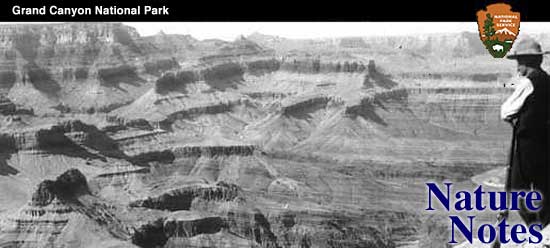

|
By Edwin D. McKee, Park Naturalist ALTHOUGH there are comparatively few records of the Mexican Spotted Owl, (Strix o. lucida), from the state of Arizona, Dr. Harry S. Swarth in writing "A Distributional List of the Birds of Arizona"1 in 1914 considered it as "probably not very uncommon in the higher mountains of southeastern Arizona". At that time, nevertheless, there were published records of its occurrence only from the vicinity of Tucson2 and from the Huachuca Mountains3. Since then only three other references4 to it in southern Arizona have appeared in ornithological literature.
On June 20, 1929, the known range of the interesting Spotted Owl was extended considerably to the northward in Arizona when Mr. Joe Sefton of the San Diego Society of Natural History collected one from an aspen tree in the vicinity of San Francisco Mountain. This specimen was subsequently recorded by Mr. L. M. Huey5. Last year the northward range of this species was still further extended when a Spotted Owl was found near Indian Gardens in Grand Canyon.6
In late October, 1932, another Mexican Spotted Owl was found in Grand Canyon - apparently the second record from the canyon and the third from northern Arizona. This time the specimen was not collected but was photographed with such success that the validity of the identification cannot be disputed. The picture was taken by Dr. John Maxson, geologist of the California Institute of Technology, who writes the following description of the occurrence: "I was amazed that it (owl) showed little inclination to desert the rocky crag upon which I surprised it. Both the Owl and I were startled; the owl because of the unprecedented interruption of the solitude of Horn Creek, and I because my footholds and handholds were very precarious. I set up my tripod in order to focus exactly and he became somewhat perturbed, ruffling his feathers slightly but keeping his eyes shut. He, of course, faced in my direction constantly and stayed at a distance of about ten feet. Not until Dr. Campbell, who was with me, came up on the cliff back of him, did he become really disturbed. Then he could not watch both of us at once but had to turn his head hither and yen to keep track of us. At the coincidence of movement by both of us, he ruffled his feathers till he was oval, opened his eyes very wide, and had a thorough evacuation. As we left, he resumed his sleep."
Eighty-three new plants have recently been added to the Grand Canyon Herbarium, The specimens represent collections from both rims and from the interior of the canyon. They were identified at the National Herbarium in Washington through the courtesy of Dr. Frederick Coville.
| ||||||
| <<< Previous | > Cover < |
vol7-11f.htm
14-Oct-2011